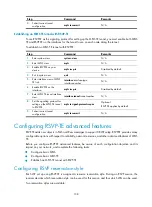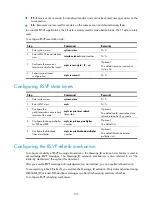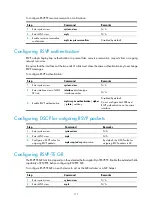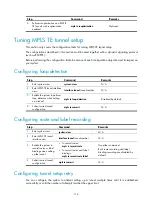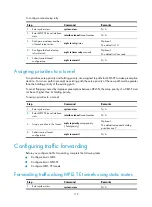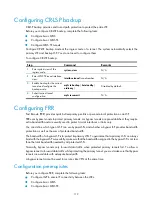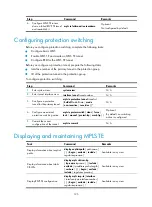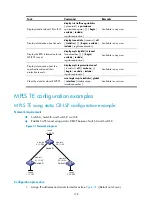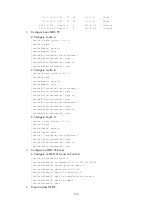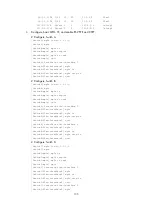
120
•
Establish an MPLS TE tunnel with RSVP-TE.
•
Set up primary LSPs.
Enabling FRR on the headend of a primary LSP
Step Command
Remarks
1.
Enter system view.
system-view
N/A
2.
Enter tunnel interface view of
the primary LSP.
interface tunnel
tunnel-number
N/A
3.
Enable FRR.
mpls te fast-reroute
Disabled by default.
Do not configure FRR and RSVP
authentication on the same
interface.
4.
Submit current tunnel
configuration.
mpls te commit
N/A
Configuring a bypass tunnel on its PLR
After a tunnel is specified to protect an interface, its corresponding LSP becomes a bypass LSP. The setup
of a bypass LSP must be manually performed on the PLR. The configuration of a bypass LSP is similar to
that of a common LSP, but a bypass LSP cannot act as a primary LSP to be protected by another LSP at
the same time.
When specifying a bypass tunnel for an interface, ensure the following:
•
The bypass tunnel is up.
•
The protected interface is not the outgoing interface of the bypass tunnel.
Up to three bypass tunnels can be specified for a protected interface. The best-fit algorithm is used to
determine which of them is used in case failure occurs.
Your device has a restriction on links that use the same bypass tunnel so their total bandwidth does not
exceeds a specific value.
To configure a bypass tunnel on its PLR:
Step Command
Remarks
1.
Enter system view.
system-view
N/A
2.
Enter interface view of the
bypass tunnel.
interface tunnel
tunnel-number
N/A
3.
Specify the destination
address of the bypass tunnel.
destination
ip-address
•
For node protection, this is the
LSR ID of the next hop router of
PLR.
•
For link protection, this is the
LSR ID of the next hop device of
PLR.
4.
Submit current tunnel
configuration.
mpls te commit
N/A
5.
Return to system view.
quit
N/A



